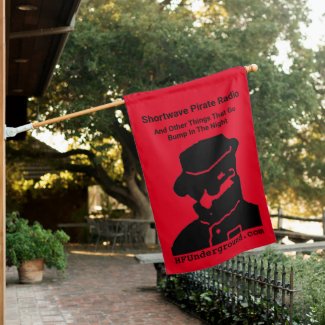I have, and if you go to the Equipment forum and search "ferrite rod" a couple of topics will pop up. This will partially detail what I have been using.
That being said, a couple of notes about ferrite loops for LW NDBs...
In the past season, I have used 2 antennas for NDB DXing. For wideband unattended SDR Recording, I have been using an active whip antenna similar to the DX Engineering Z1501, now discontinued. I have found this to be quite sensitive for such a compact antenna and have been able to get logs from HI to GRL and down to CHL at 8200 km. While I primarily used this for unattended recording, it being wideband makes it very simple to use for active scanning during live sessions. It is non-directional.
The main goto antenna for live DXing was the ferrite rod loop. Being very directional, it was easy to exploit its azimuthal discrimination properties for flushing out weak signals. It is also a bit more sensitive than the active whip; it seemed to add up to 200 km in range to logs during daytime groundwave reception. The directional properties were very useful for both signal discrimination AND local QRN suppression.
A ferrite rod loop has a serious flaw which will show up in unattended long term reception. The ferrite R61 required for best Q at LW frequencies has a nasty temp coefficient which will result in the resonant frequency of the loop shifting upwards as the temperature drops during the overnight hours. For typical temperature excursions overnite, the resonant freq may shift upwards by 5 kHz or more for a given capacitance. This will probably be unacceptable for targeted reception at a particular frequency as you seem to desire for DGPS.
I have tried to get a handle on this via the software I use to control the loop. Prior versions of the software had the ability to let the user create multiple Calibration Curves in a Calibration Table. Each curve defines the resonant frequency of the loop versus the number of steps of the stepper motor drive train (there are about 4600 steps to fully traverse the tuning capacitor) and is most accurate at the temperature at which the loop was calibrated. As the season progressed - and the temps dropped - I would create new Calibration Tables, and prior to use, I would select the appropriate curve for the current ambient temperature. This helped a lot, but tuning errors of a few kHz were still seen.
Last season, I added a temp sensor to the loop head which could be polled by the controller software, and created new Calibration Curves as the season progressed. When the program demanded a resonant frequency for the ferrite loop, the software would compute a stepper position for the currently polled temperature using a pair of bounding Calibration Curves in the table if this was possible. I was able to decrease tuning errors to approximately 1-2 kHz, but given the fact that this tank was running at a fully loaded Q of better than 250 (necessary for a good Effective Height), loss of sensitivity due to mistuning was still unacceptable.
My bottom line here is that the compact ferrite loop has proven to be an excellent performer for live DXing, a scenario in which the user can always tweak the resonant frequency for peak reception. It has some limited use for overnight recording, but here I have to kind of guess at how the temp will drop in the wee hours and set its tuning so that resonance will slide through resonance at the time I would expect to hear a particular NDB.
My code has the ability to scan through a prepared list of particular NDBs, and tune the loop (and spin the rotator to the NDB az); I have not really been able to exploit this all that successfully so far. I have come to the conclusion that I am not going to get there with ferrite. I am in the process of building a new loop - an air core loop - with increased sensitivity and better temperature stability due to the absence of ferrite. Here's a pic of the work in progress:

This seems to be giving promising results while undergoing testing down in the basement.
I hope to have this fully deployed in a couple of weeks, and will post details then.



